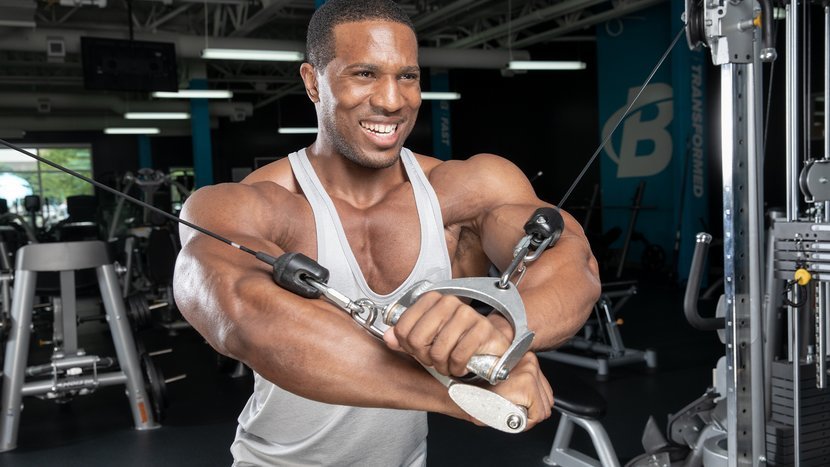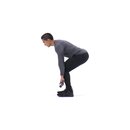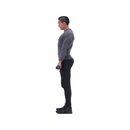Dymatize-athlete Mike Hildebrandt isn't known for run-of-the-mill workouts, especially on back day. Given his exercise-science degree and extensive personal-training experience, he bypasses simplistic templates for building muscle to create one that's far more demanding but big on payoff.
The entire routine should take 60-75 minutes. By the end, Hildebrandt says, you should feel the blood pumping in your lats and your back. This workout is not meant for your arms, but if you do feel a pump in your biceps, that's OK. It's hard to keep them disengaged.
Overall, you'll be hitting a lot of major muscle groups with a lot of sets and reps. Once you finish up, you should feel exhausted, ready for your post-workout nutrition—and ready to start recovering for your next workout.

BodyFit
$6.99/month- 2,500+ expert-created single workouts
- 3,500+ how-to exercise videos
- Detailed workout instruction
- Step-by-step workout tips
- Training at gym or at home
- Access to Workout Plans
- Access to Bodyfit App
- Store Discounts
Already have a Bodybuilding.com account with BodyFit? Sign In

What comes with BodyFit?

- Instructional Videos
Don't risk doing a workout improperly! Avoid injury and keep your form in check with in-depth instructional videos.

- How-to Images
View our enormous library of workout photos and see exactly how each exercise should be done before you give it a shot.

- Step-by-Step Instructions
Quickly read through our step-by-step directions to ensure you're doing each workout correctly the first time, every time.
Mike's Technique Keys
Deadlift
Posterior-chain exercises like this work every backside muscle group from the calves to the upper traps. Start with 2-3 good warm-up sets to get ready for your working weight. The 5-sets-of-5-reps format will provide both a strength- and size-building stimulus.

Deadlift
"Pick weight that's about your 5RM," Hildebrandt says. "You shouldn't have a sixth rep in you. Take each set to failure, knowing that with cumulative fatigue you may have to lower the weight to hit all of your reps. Keep your back straight; if you have to round your back, you're using too much weight."
Lat pull-down
Focus on controlling your tempo and using a wide grip to hit your lats. Proper form is very important, Hildebrandt says; otherwise, this exercise can easily turn into a biceps movement.

Lat Pull-down
"For a proper contraction, squeeze you shoulder blades down and then pull your arms down. The pull-down also allows you to focus on the lats with better precision. With two sets of joints working, you should be lifting a lot of weight."
Dumbbell incline row
By choosing chest-supported dumbbell incline rows, Hildebrandt reduces the tendency to recruit momentum and once again bring the biceps into play.

Dumbbell Incline Row
"It's really hard to cheat the movement, because your chest is supported, which makes it hard for you to swing or sway. The lower back is taken out of this movement, too, so you can really target your mid-back."
Make sure you pull your shoulder blades back before you start to pull on the weight. Use enough weight so you hit failure at 10 reps, while still being able to take your shoulder blades through the full range of motion.
Prone single-arm lat pull
This exercise will take you to the floor, with your head pointing toward a low pulley with a D-handle attached. This will enable you to hit the lats from a completely different angle, using a single-arm pull-down kind of movement.
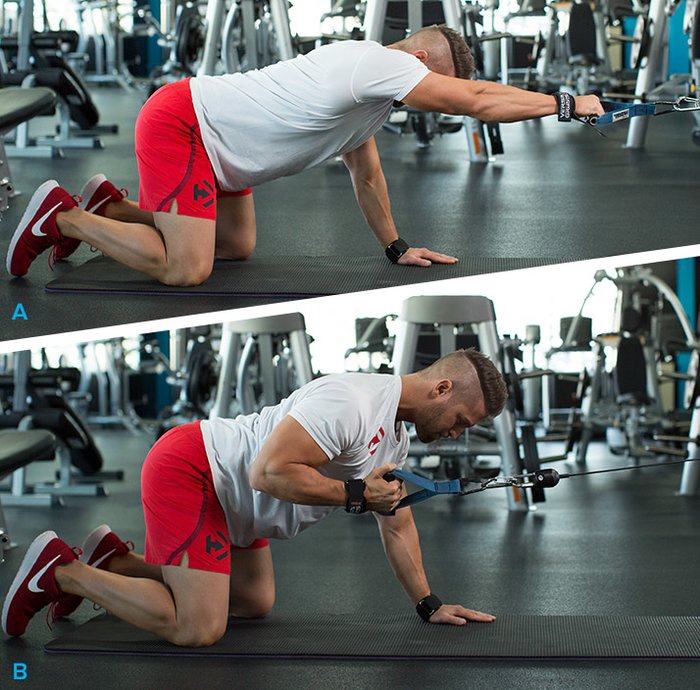
Prone Single-Arm Lat Pull
"Single-arm movements really allow you to focus on the contraction," Hildebrandt says. "With a lighter weight, you can really focus on the mind-muscle connection. Start with a good scapular contraction, moving the shoulder blades together, and then pulling with the arm."
Hildebrandt starts with an overhand grip, then supinates his hand a quarter turn so his grip is neutral at the end of movement. He reverses this motion on the negative. The higher-rep targets allow you to build more detail into the workout—and into your physique.
Seated cable high row
In another unique technique alteration, Hildebrandt takes a wide, overhand grip on a lat bar, and instead of pulling it into his midsection, he brings it into his neck, almost like a face pull. The change in grip and angle is going to hit all the muscles in your back, with a focus on the middle-back muscles and rear delts.
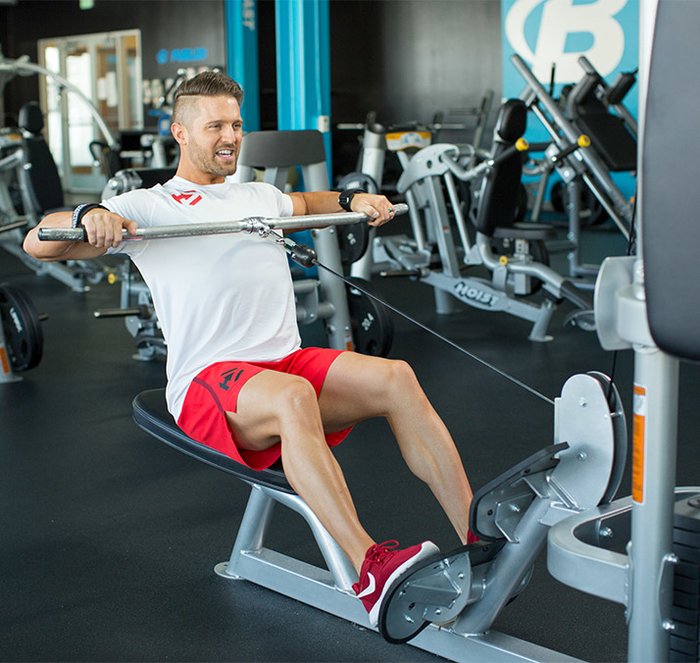
Seated Cable High Row
"Pull nice and high," Hildebrandt says. "We don't want to be distracted with other muscle groups that are trying to work when we accomplish the movement."
Straight-arm pull-down
Hildebrandt calls this exercise the perfect finisher for his routine because of the way it targets the lats like almost no other exercise. The way it focuses on the shoulder joint and lat muscle makes it the only true isolation movement in the workout. Use a weight you can control so you can hit your rep count.
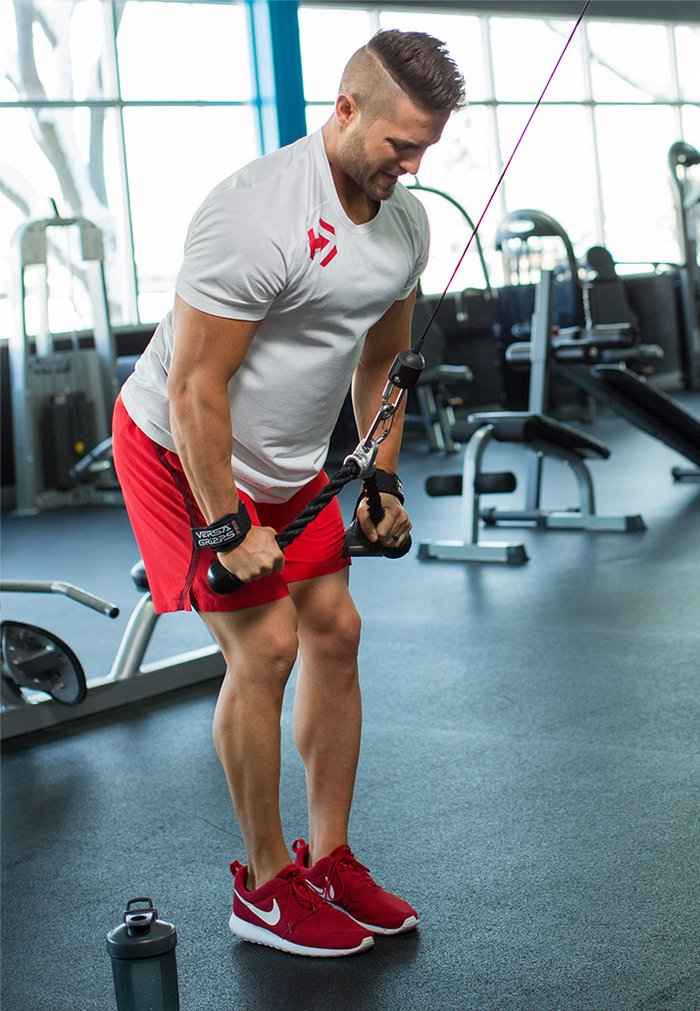
Straight-Arm Pull-down
"It's an awesome finisher for back, and taking the sets to 16 allows you greater control to really feel the pump in your lats. And higher reps help to carve more detail into your back."
Hildebrandt suggests that if your back is a lagging body part, do this workout twice a week—as long as you wait at least 72 hours before doing it again. If you're just looking for a solid strength-and-size routine to put in your split, once a week is enough.


